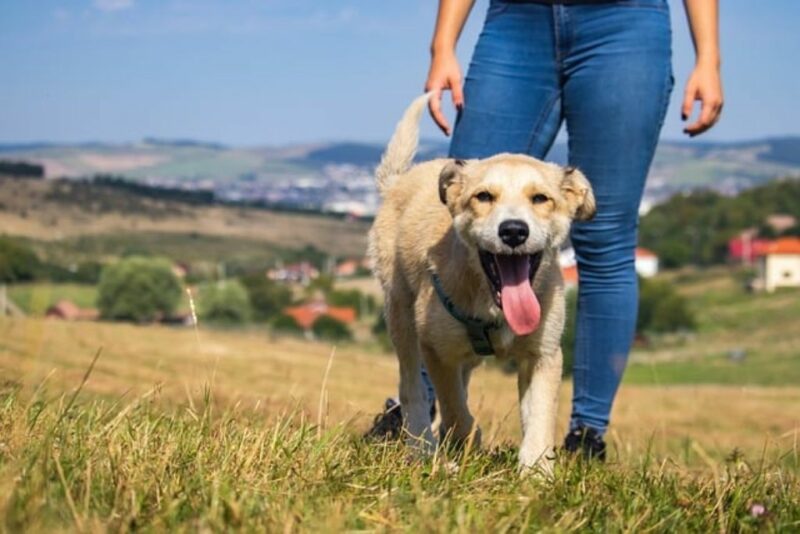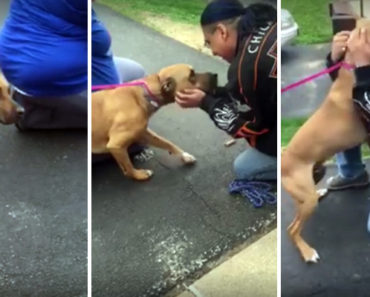Dogs have been our companions for thousands of years, and their ability to communicate with us goes far beyond barking and wagging their tails. In fact, dogs are experts at non-verbal communication, using their body language to convey their feelings and needs.

To truly understand and connect with our furry friends, it’s essential to decode these canine body language cues. So, let’s take a closer look at some of the most common signals our dogs send us and what they really mean.
What Is Your Furry Friend Trying to Tell You?
The Tail Wag: More Than Just Happiness
One of the most iconic dog behaviors is the tail wag, often associated with happiness and excitement. While this is often true, it’s important to remember that the tail wag is not a one-size-fits-all indicator of a dog’s mood.
The position, speed, and direction of the wag can reveal a lot about what’s going on in their mind. So next time you’re going for a walk, make sure to keep an eye on your dog’s tail movement. Here’s what different behaviors mean:
- High Wag: When a dog holds its tail high while wagging, it typically indicates confidence and happiness. They are likely feeling positive and ready to engage with you or other dogs.
- Low Wag: A low tail wag, on the other hand, may signify submission or uncertainty. If a dog is feeling anxious or trying to appease someone or another dog, they might wag their tail in this manner.
- Slow Wag: A slow wag might suggest that your dog is cautious or assessing a situation. It can also indicate that they are not feeling well or are in pain.
- Fast Wag: A fast wag, especially if accompanied by a relaxed body and a smiling face, usually indicates excitement and joy.
It’s crucial to consider the overall context and the rest of the dog’s body language when interpreting the tail wag. For instance, a dog with a stiff body and a high tail wagging might be displaying dominance, not happiness. Always look for additional cues to understand their feelings accurately.
Ears: Windows to a Dog’s Soul
A dog’s ears can tell you so many things about its emotional state. Paying attention to the position, angle, and movement of their ears can help you decipher their feelings, and this applies to dog breeds ranging from the most common to the rarest ones.
- Forward Ears: When a dog’s ears are perked forward, it often signifies attentiveness and interest. They are focused on something and are ready to react.
- Backward Ears: If a dog’s ears are laid flat against its head, it can indicate fear, submission, or aggression, depending on the rest of its body language. Fearful dogs may also tuck their ears back to make themselves appear smaller and less threatening.
- One Forward, One Back: A dog with one ear forward and one ear back is usually curious or unsure. They are assessing the situation and deciding whether to approach or back away.
- Constant Twitching: Rapid ear twitching can be a sign of irritation or excitement. If your dog’s ears are twitching, it’s essential to look at their overall body language to determine the cause.
Eyes: The Mirror of the Soul
A dog’s eyes are incredibly expressive and can reveal a lot about its emotions. Just like with humans, you can often see happiness, fear, or anxiety in its beautiful eyes.
- Soft, Relaxed Eyes: When a dog has relaxed eyes with a normal blink rate, they are generally feeling calm and content.
- Dilated Pupils: Dilated pupils can indicate excitement, fear, or aggression. It’s essential to consider the context to understand which emotion your dog is experiencing.
- Half-Moon Eyes: Sometimes called “whale eyes,” this occurs when a dog shows the whites of their eyes while looking at something. It’s often a sign of fear or anxiety.
- Staring: Intense, unbroken eye contact can be a sign of aggression or dominance. Avoid prolonged staring contests with unfamiliar dogs to prevent conflict.
Mouth and Lips: More Than Just Eating
A dog’s mouth and lips can provide valuable insights into their emotions and intentions.
- Relaxed Mouth: A relaxed, slightly open mouth typically suggests a content and comfortable dog.
- Lip Licking: Dogs often lick their lips when they are anxious, stressed, or uncertain. It’s a sign that they are uncomfortable with the current situation.
- Baring Teeth: Baring teeth is a clear sign of aggression or threat. It’s a warning signal that should be taken seriously.
- Yawning: Contrary to what you might think, yawning in dogs is often a sign of stress, not tiredness. If your dog yawns excessively in a particular situation, it’s best to remove them from it.
Posture: The Big Picture
While individual body parts can provide valuable clues, the overall posture of a dog is the most telling sign of their emotional state.
A loose, wiggly body is generally a sign that your dog is happy and relaxed. A stiff, rigid body, on the other hand, can indicate fear, aggression, or discomfort. Approach with caution in such cases, especially in small towns.
And when a dog lowers their body close to the ground, it’s often a sign of submission or fear.
Raised hair along the back or hackles can indicate arousal, excitement, or aggression. However, it’s not always a sign of aggression and can also occur when a dog is excited. As mentioned earlier, the position of the tail is crucial. A tail held high typically signals confidence, while a tail tucked between the legs suggests fear or submission.
Context Matters
While decoding canine body language is incredibly informative, it’s essential to consider the context. A wagging tail doesn’t always mean a dog is friendly, and a fearful dog might not always display submissive body language. Understanding your dog’s individual personality and history is also crucial for accurate interpretation.
For example, a dog with a history of abuse may exhibit fear-based aggression, making it essential to approach them with caution and seek professional help if needed. Similarly, some breeds have unique traits and body language tendencies that may not align with the general guidelines.
That said, while understanding canine body language is invaluable for building a strong bond with your furry friend, it’s important to note that some behaviors, especially sudden or extreme changes, may indicate health issues that will require a visit to the vet rather than relying solely on what you’ve learned about their body language. For your pet’s optimal well-being, it’s crucial to consult a veterinarian in your city. If you reside in Nolensville, seeking a reliable Nolensville veterinarian is especially recommended.
Wrapping Up
Our canine companions communicate with us every day through their body language. To truly connect with and care for them, it’s crucial to learn the nuances of their non-verbal cues.
By paying attention to their tail, ears, eyes, mouth, lips, and overall posture, we can better understand their feelings and needs. Remember that each dog is an individual with their own unique personality and experiences. What’s most important is building a strong bond based on trust and understanding.
So, the next time you interact with your furry friend, take a moment to decode their body language, and you’ll be better equipped to meet their emotional needs and ensure a harmonious relationship between you and your four-legged companion.
Please share these common body language signals to better understand your dog’s needs with your friends and family.



